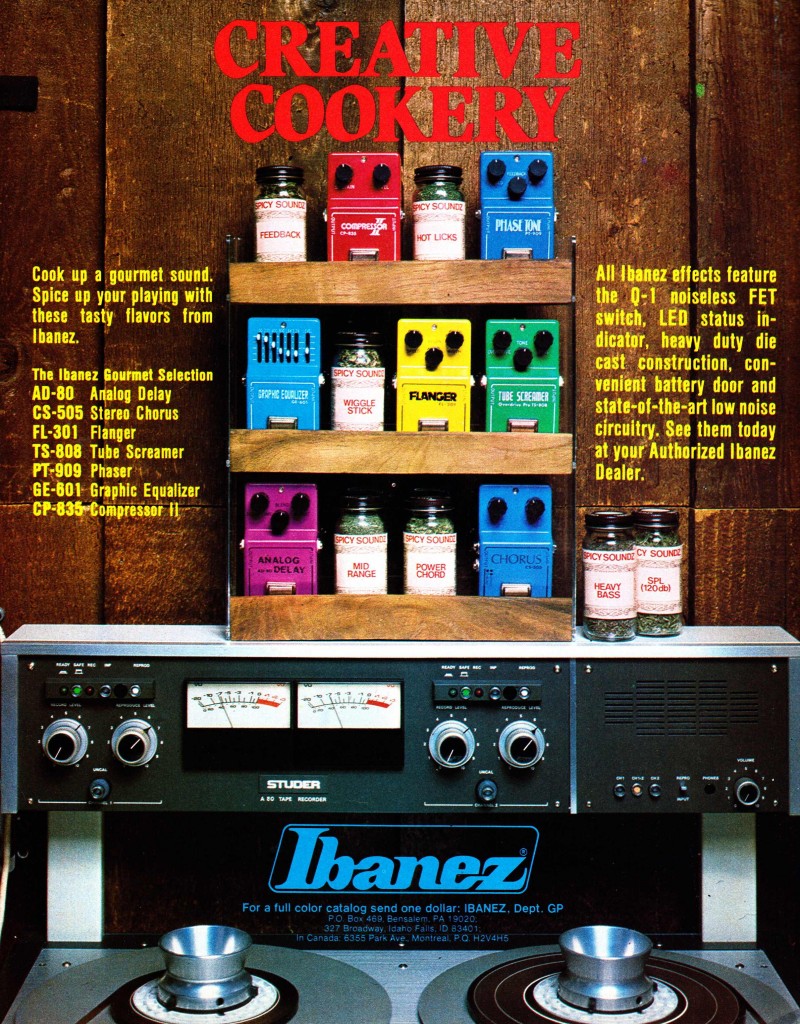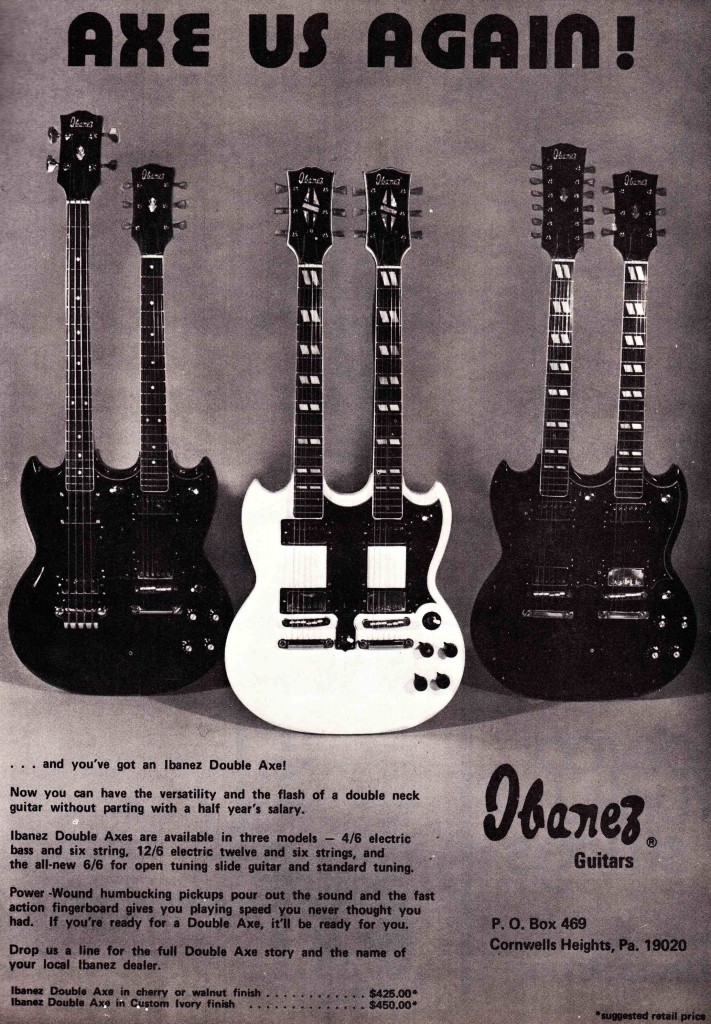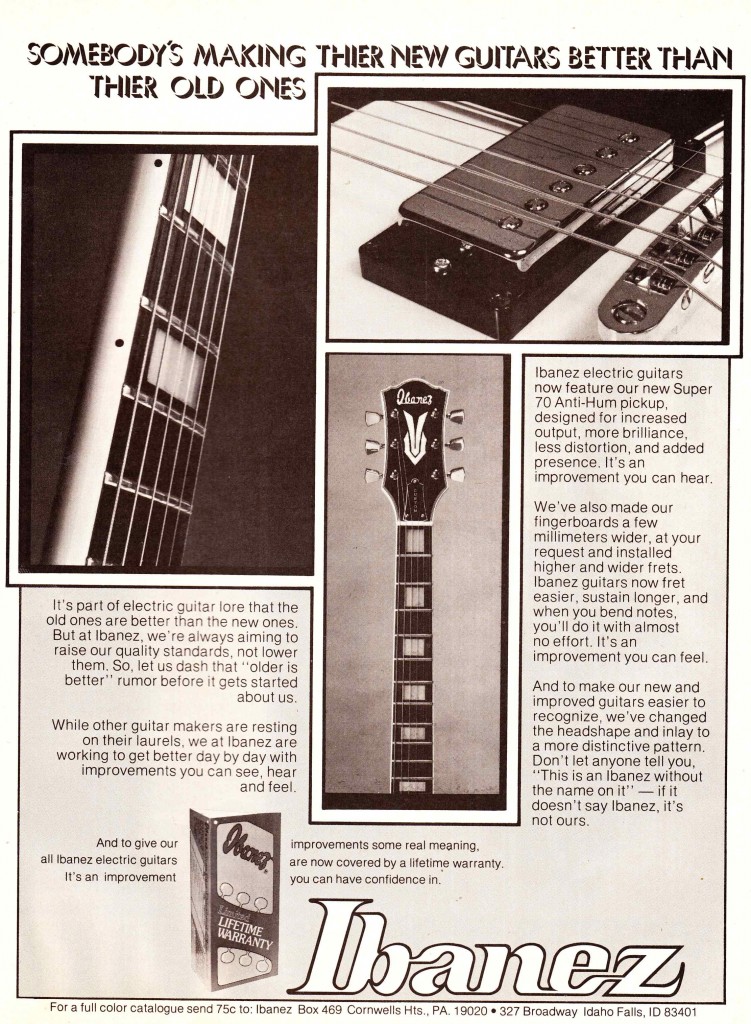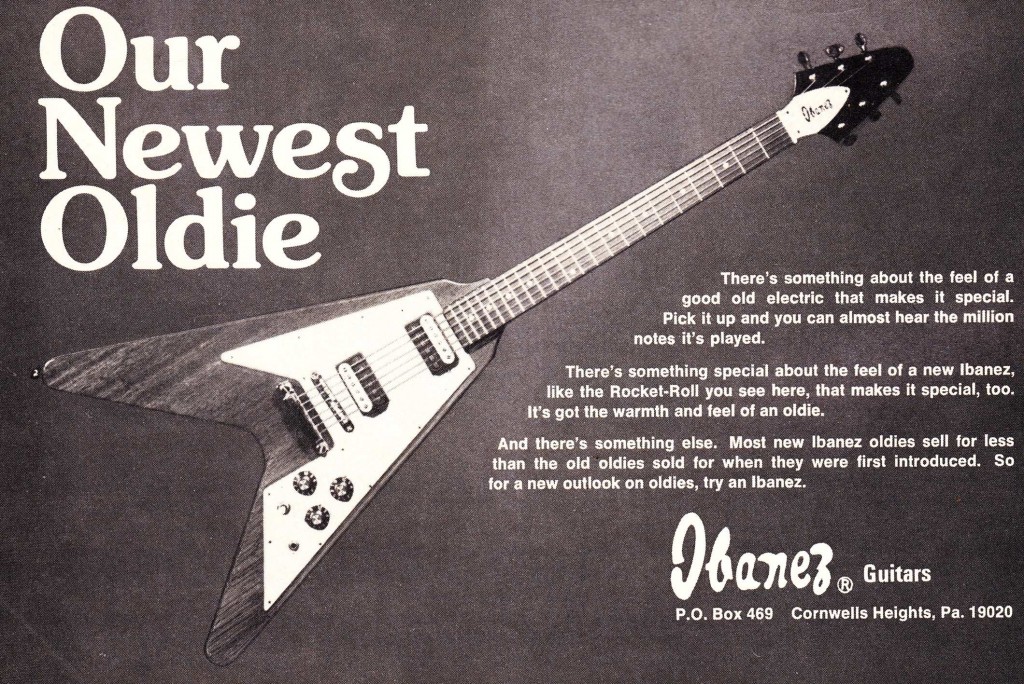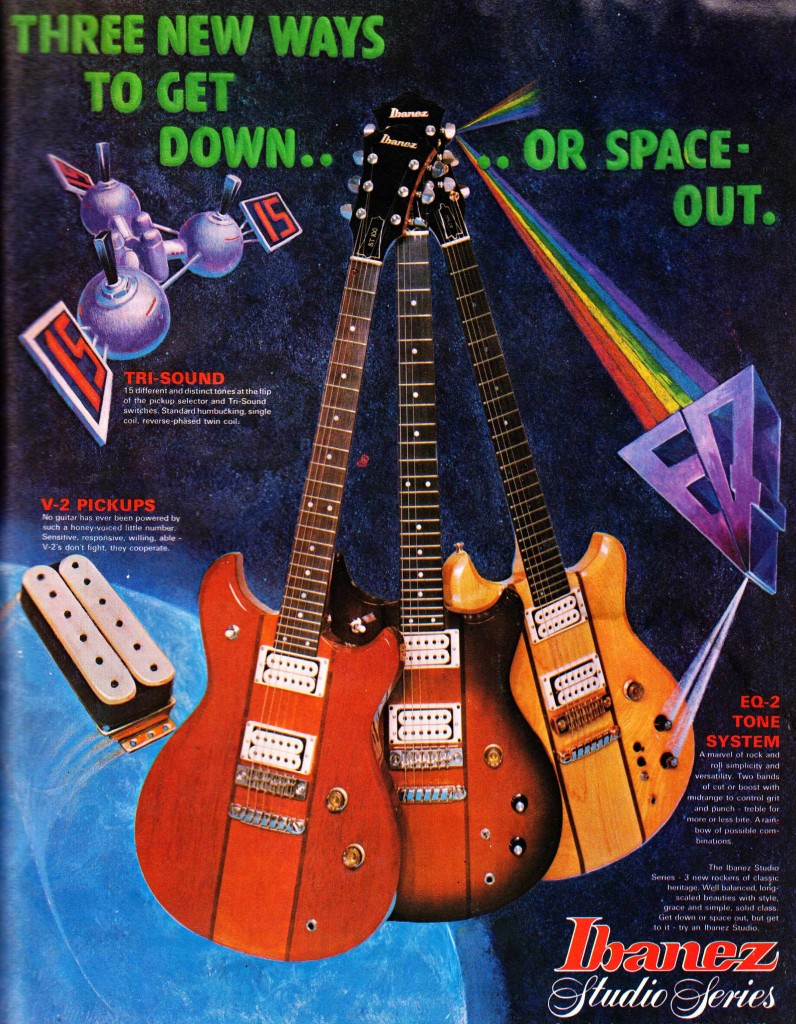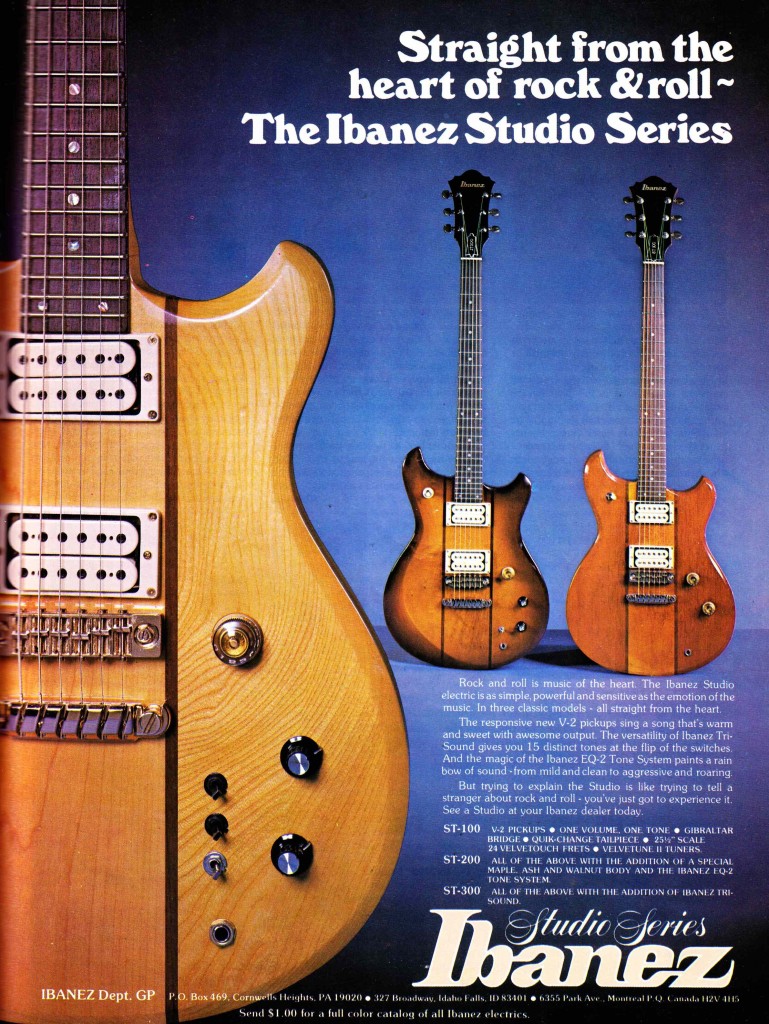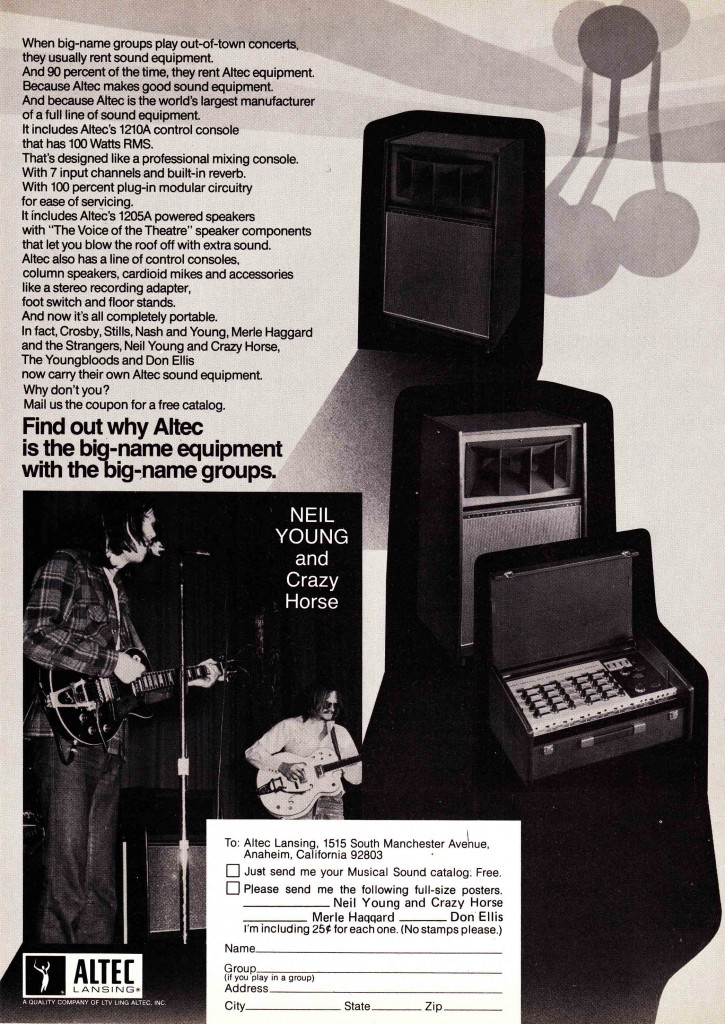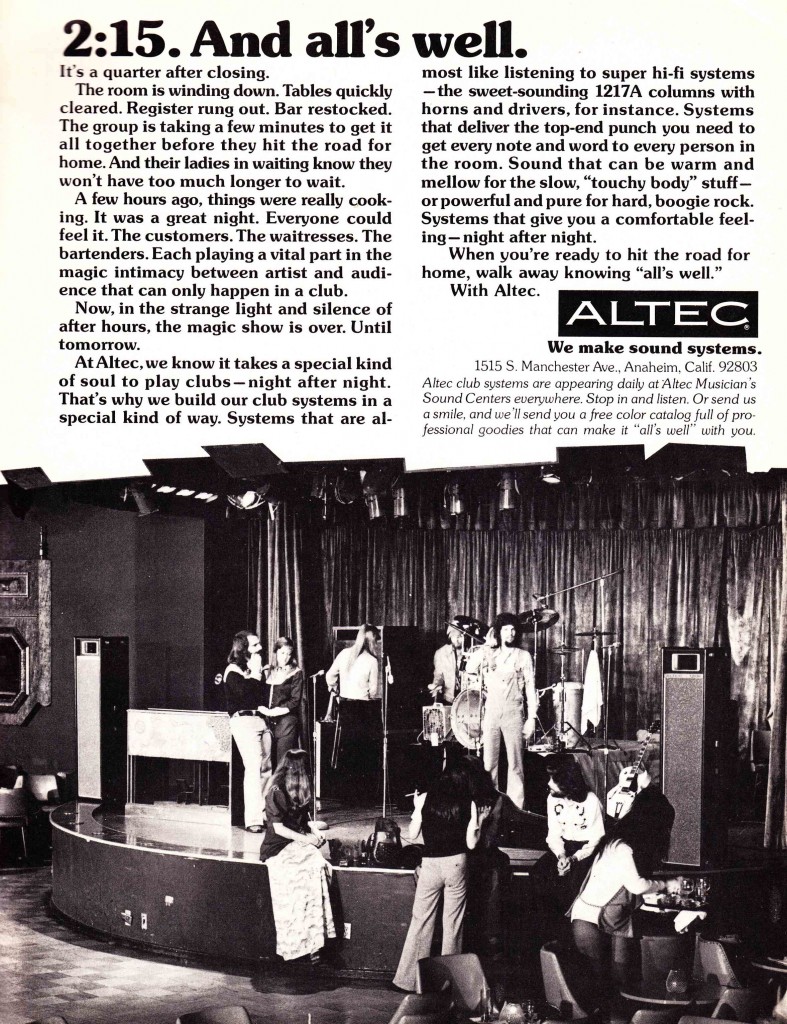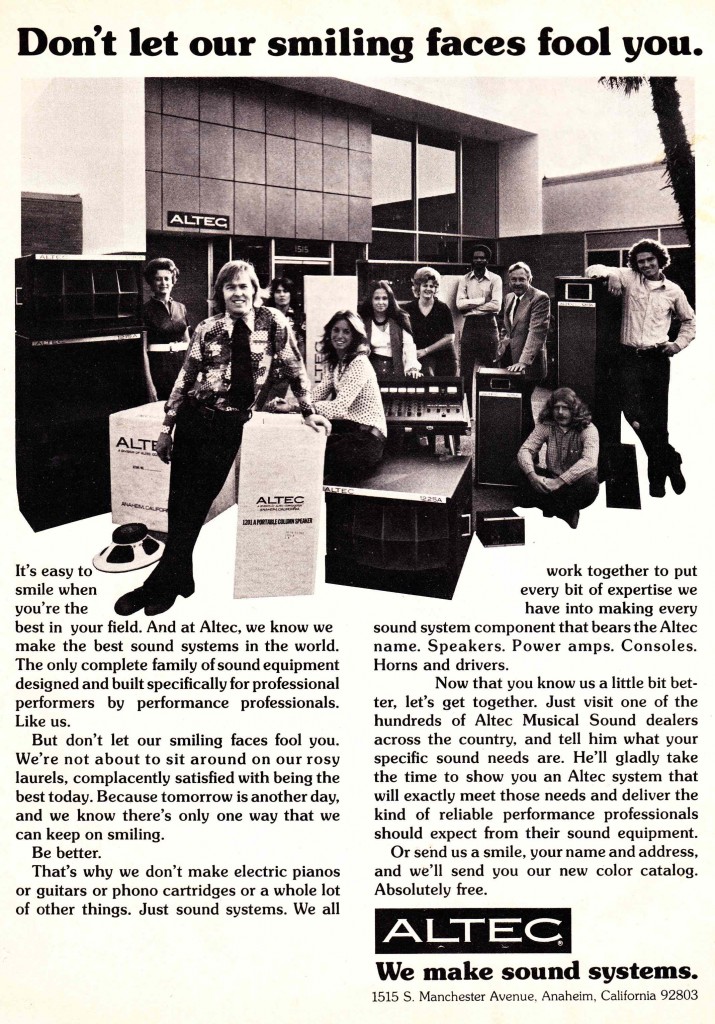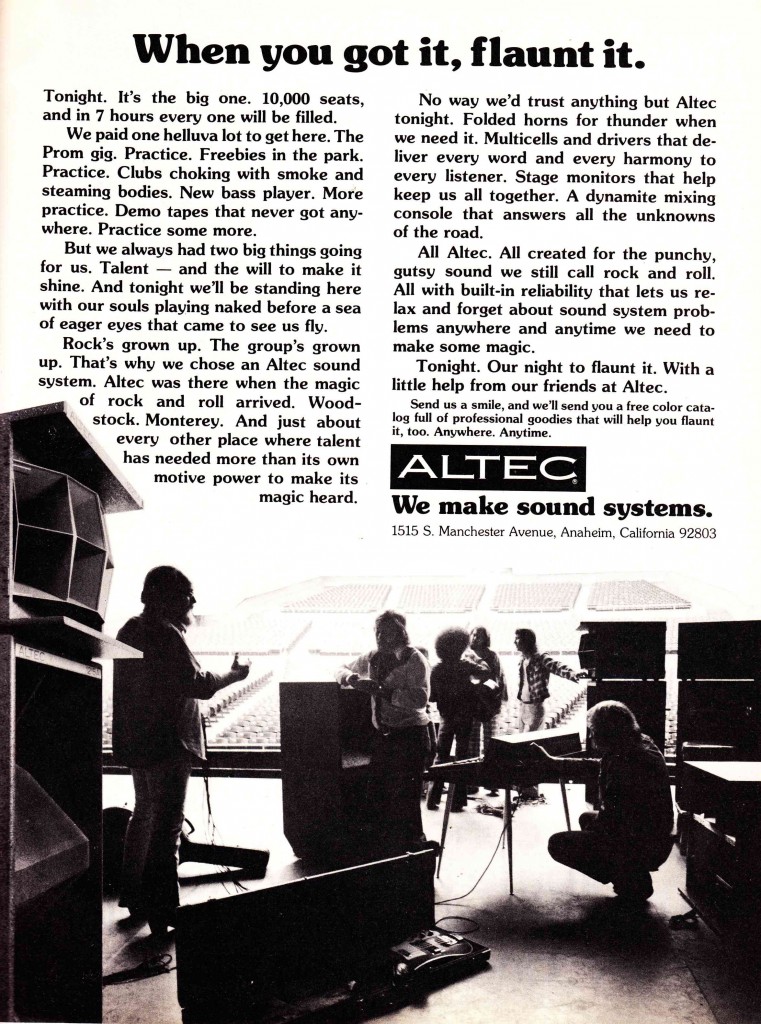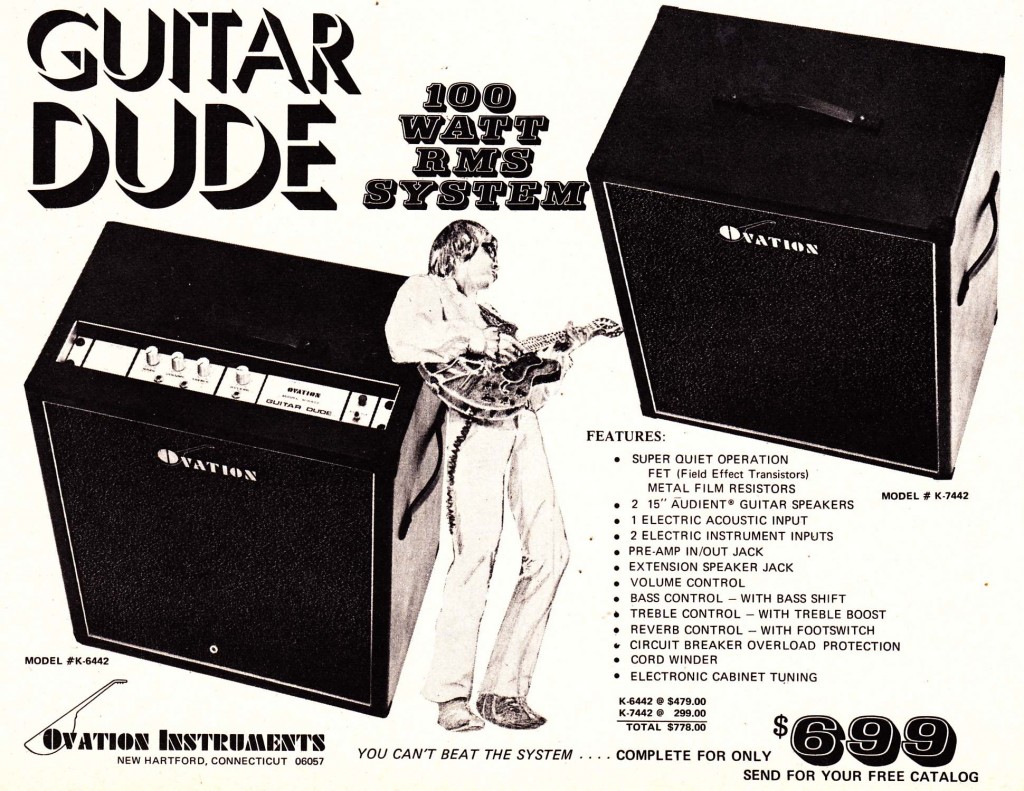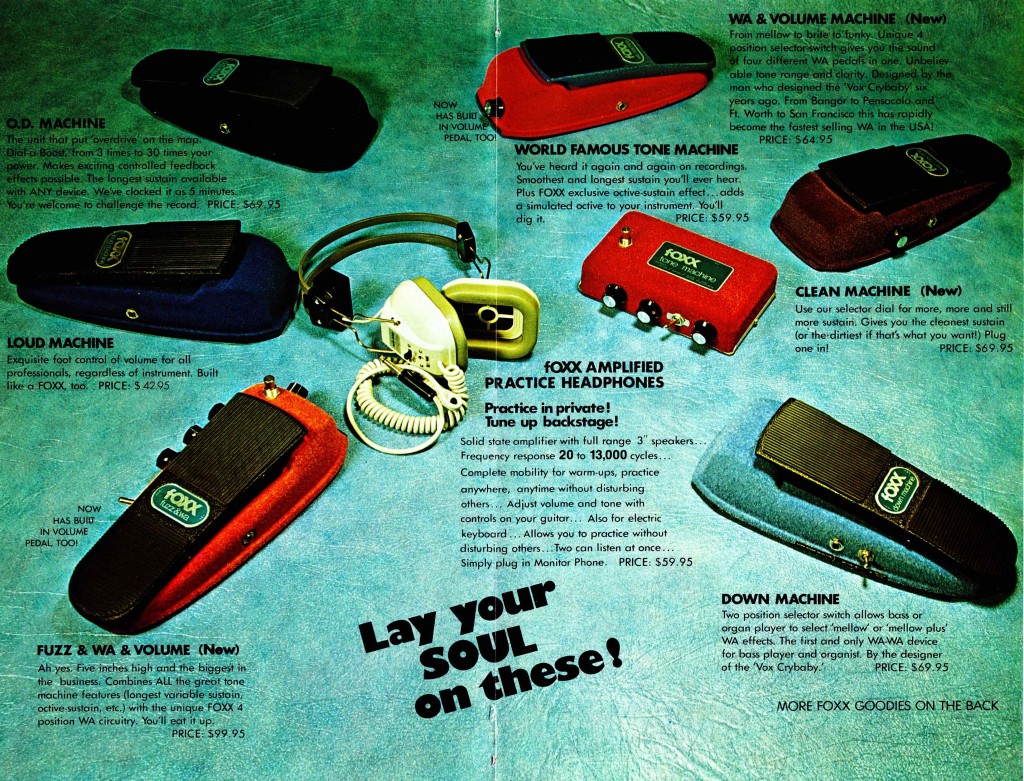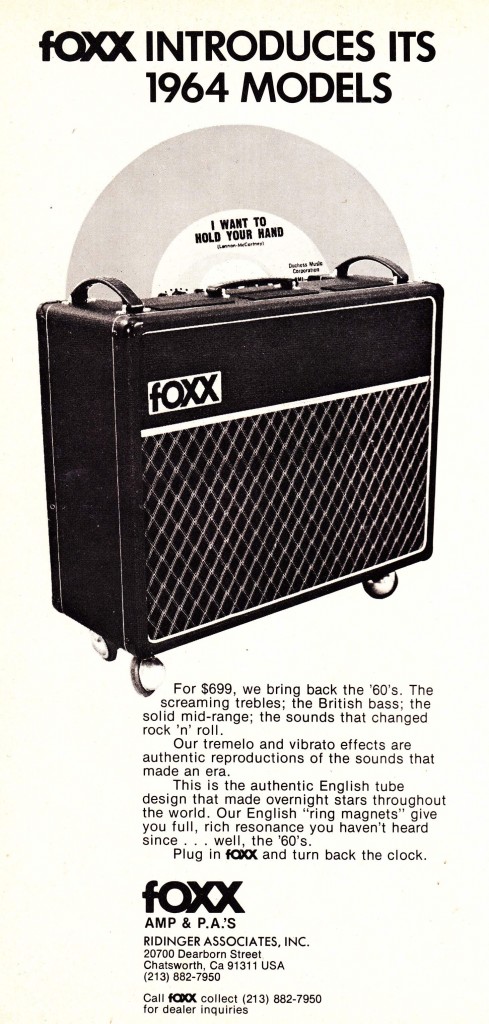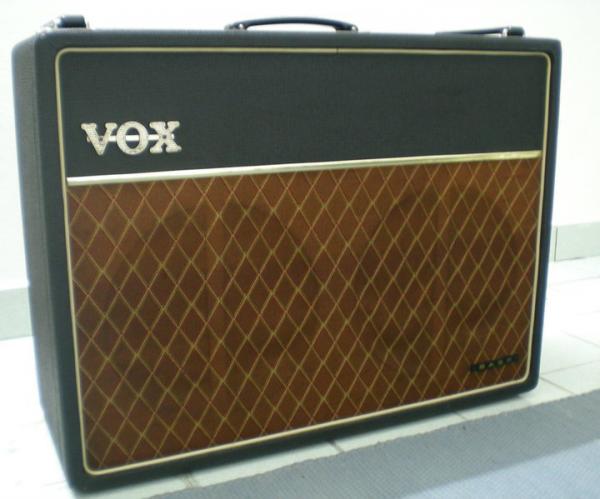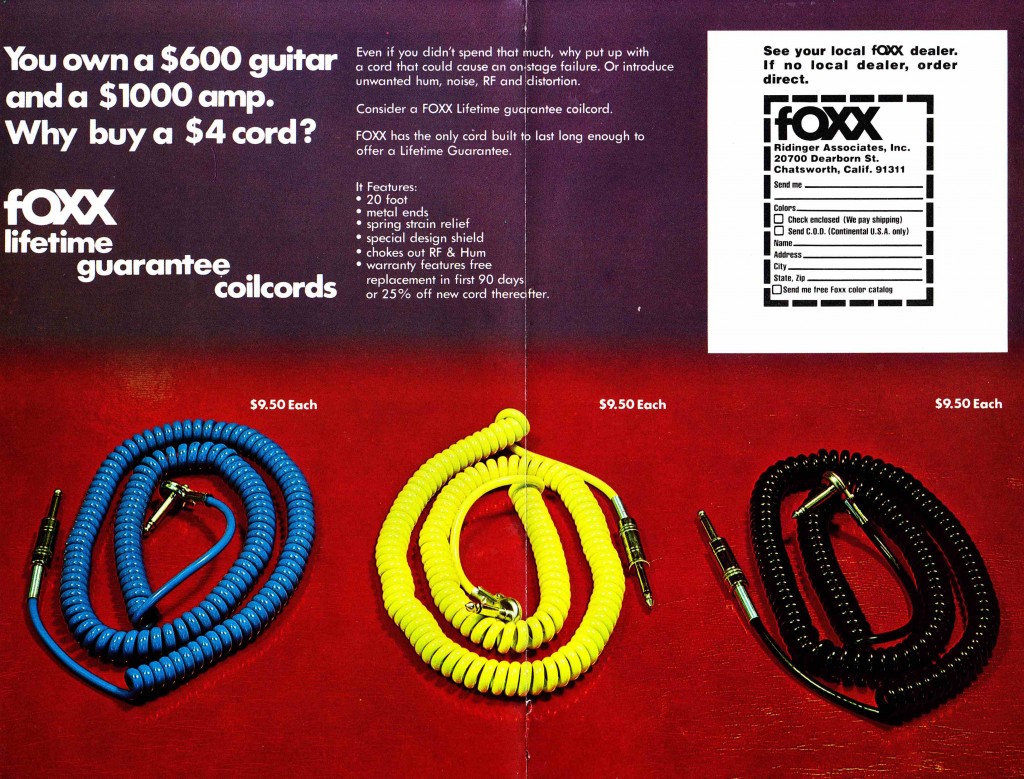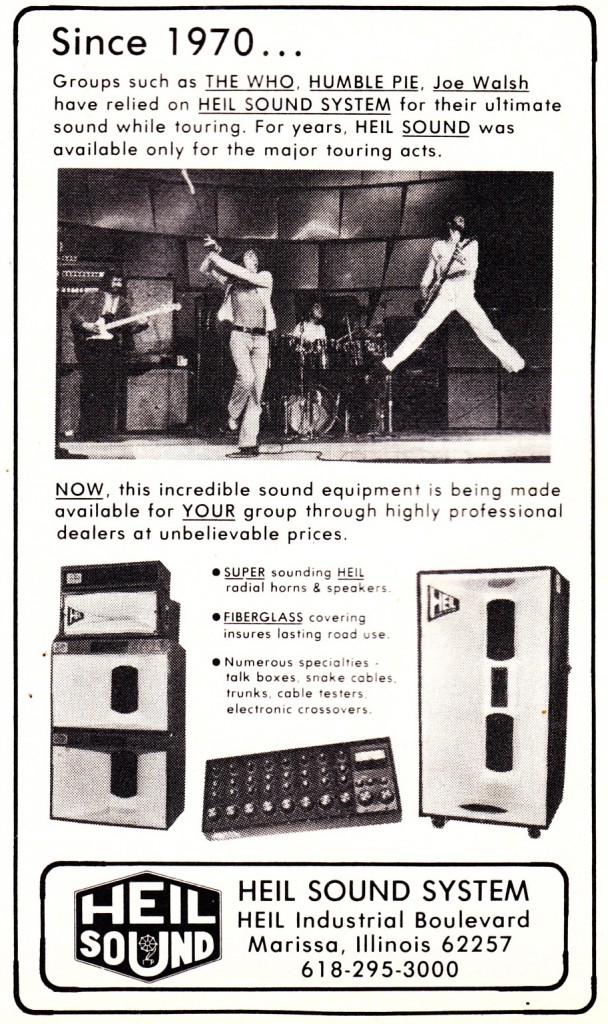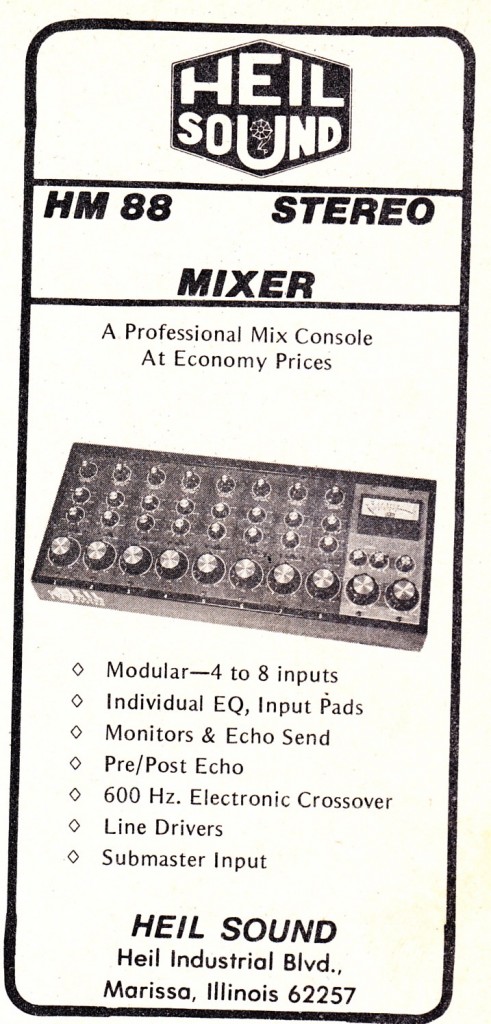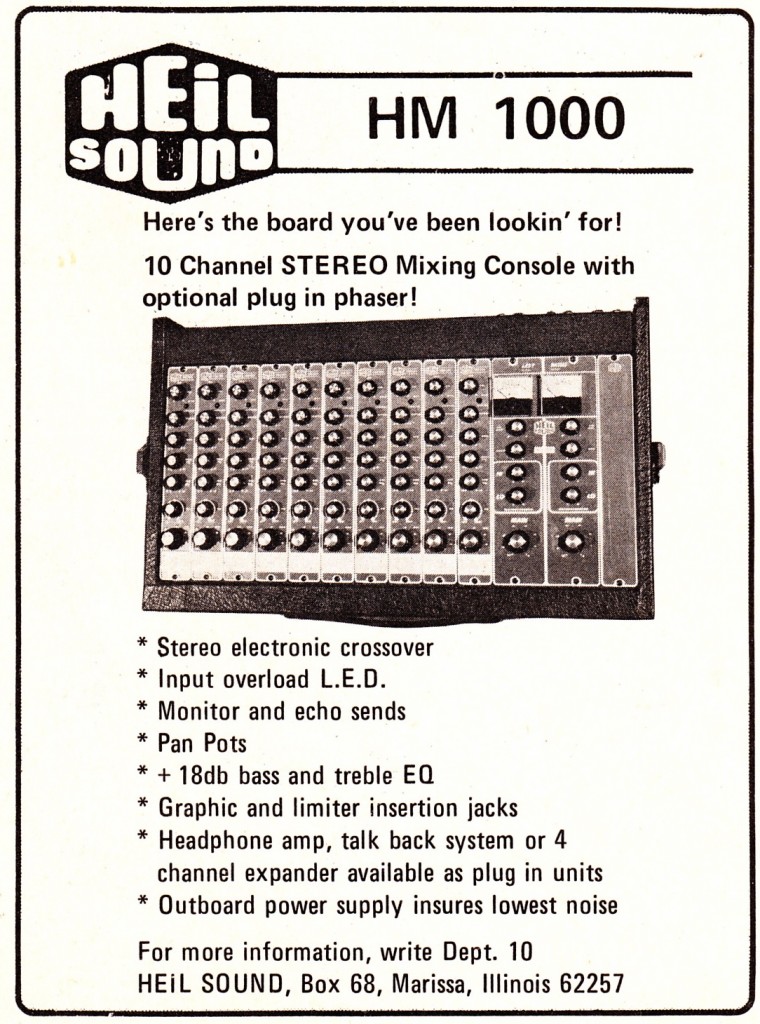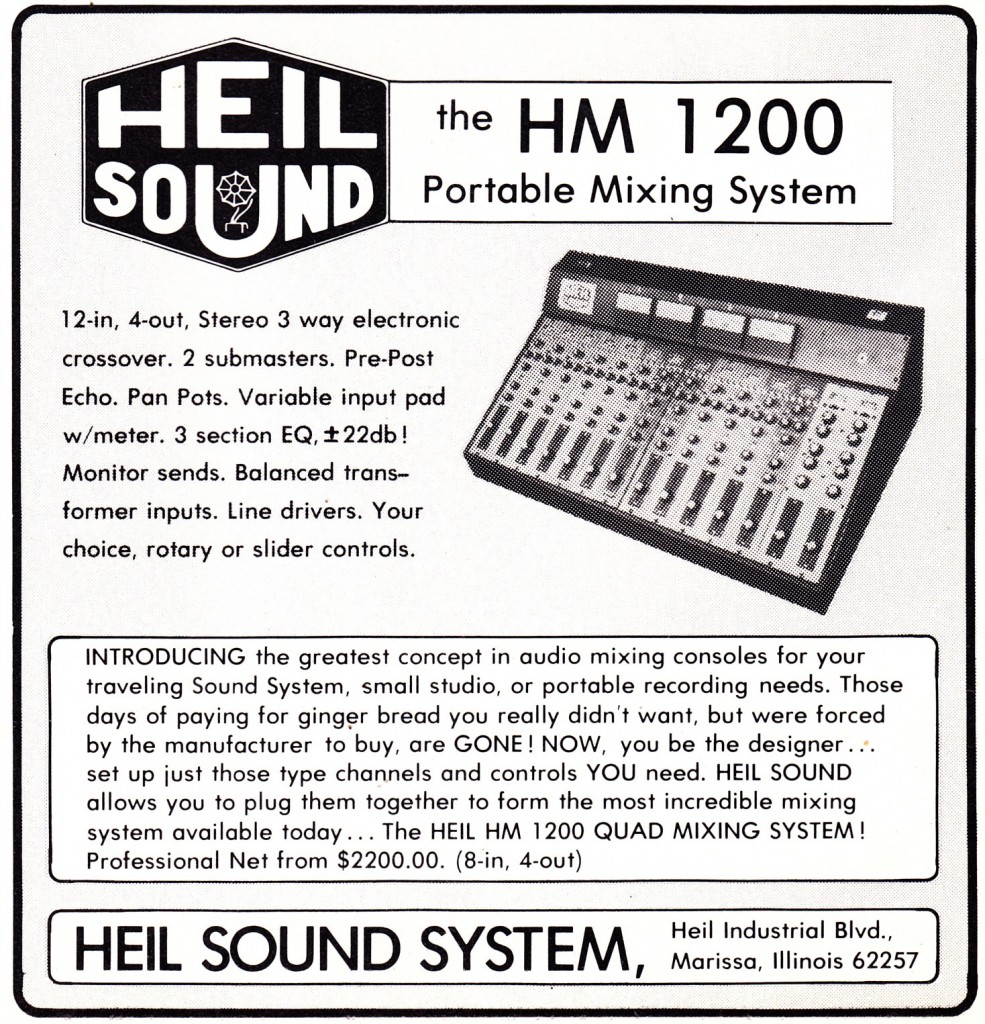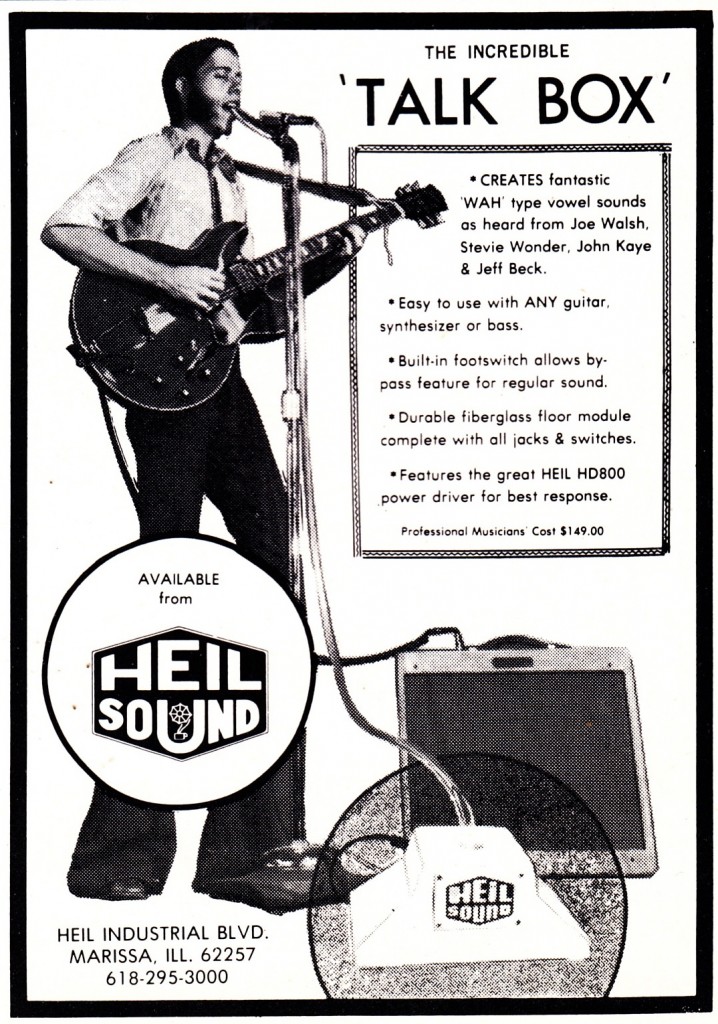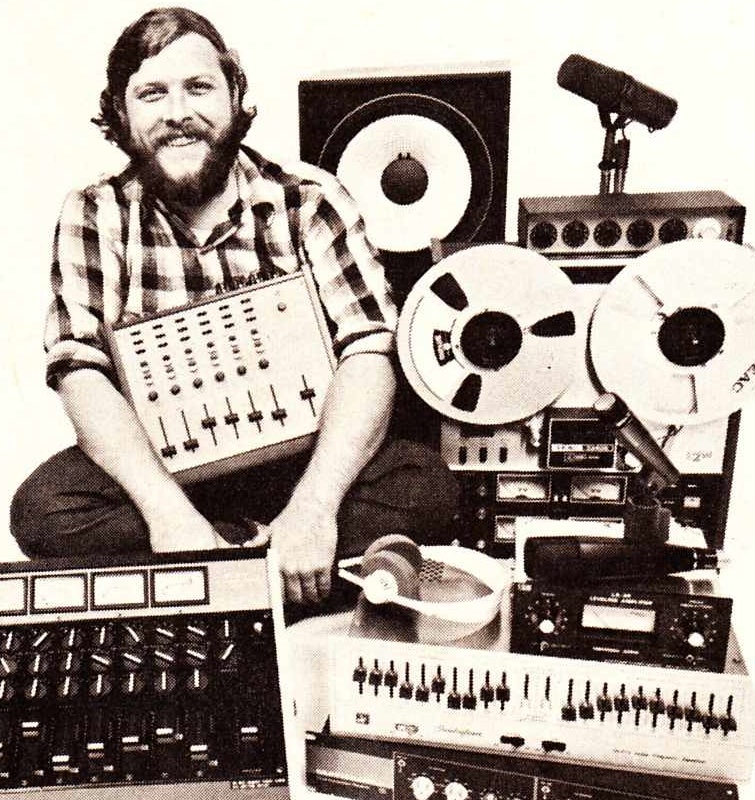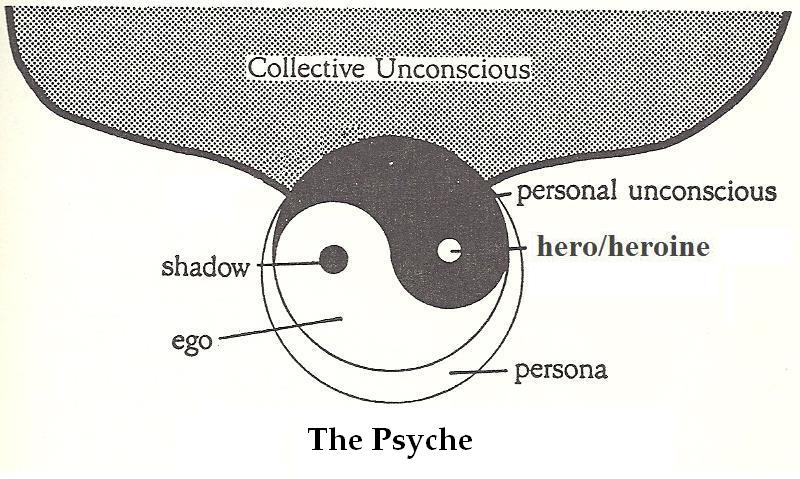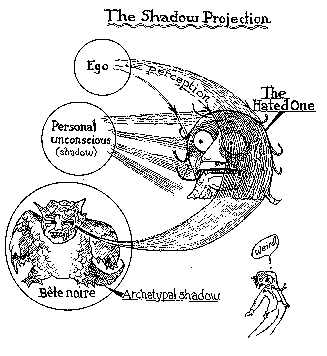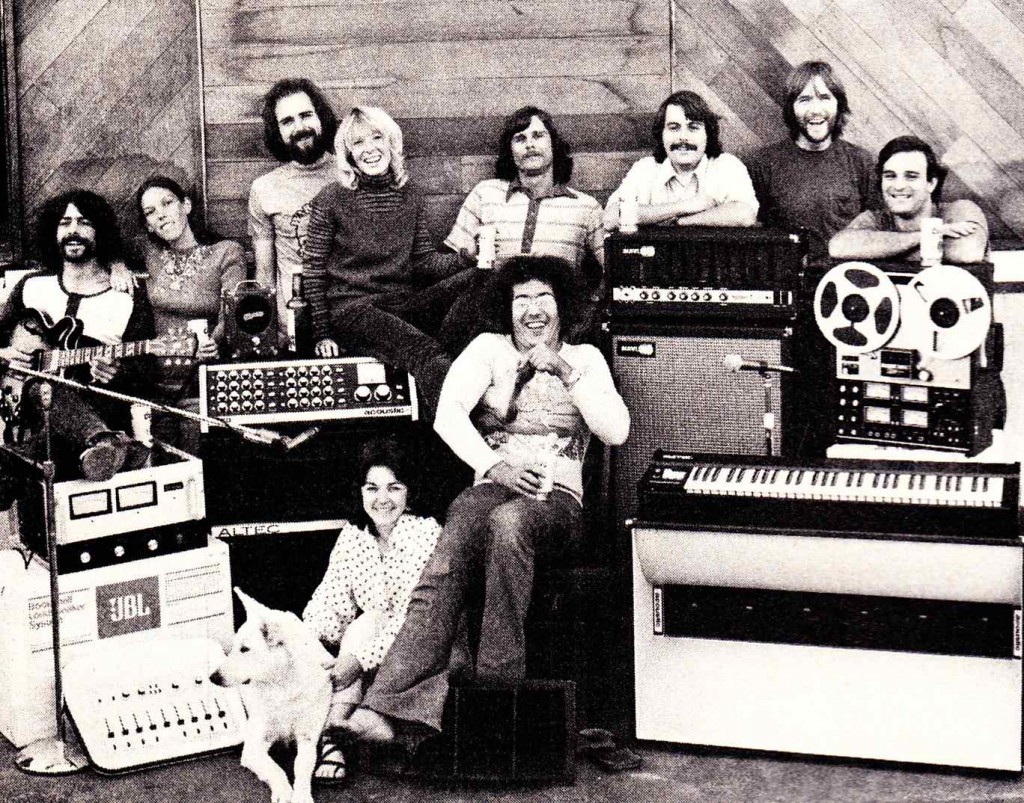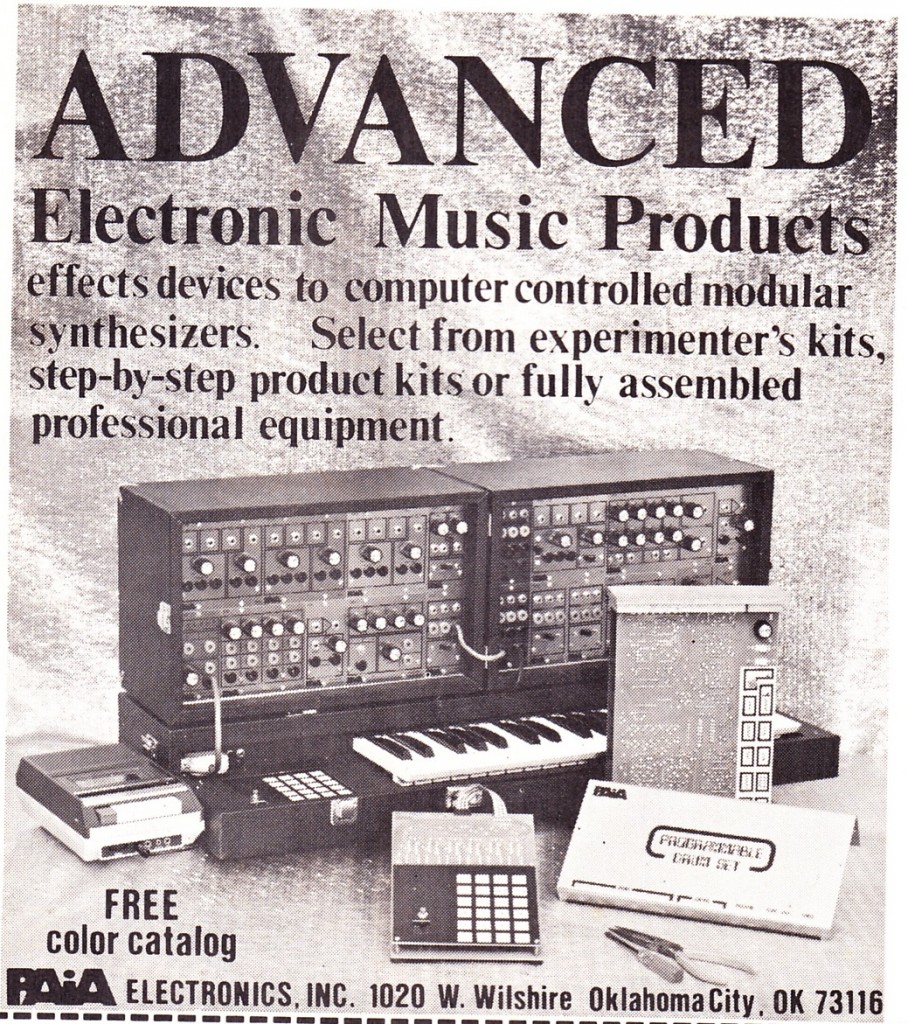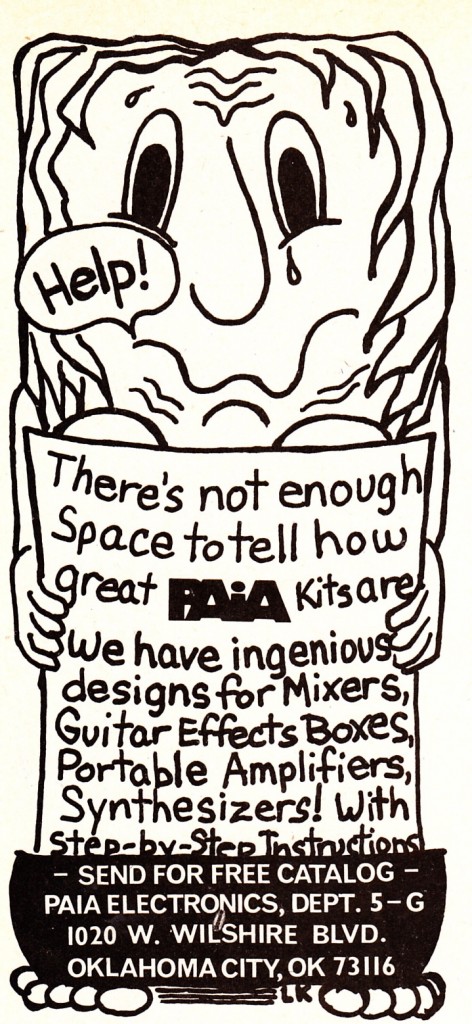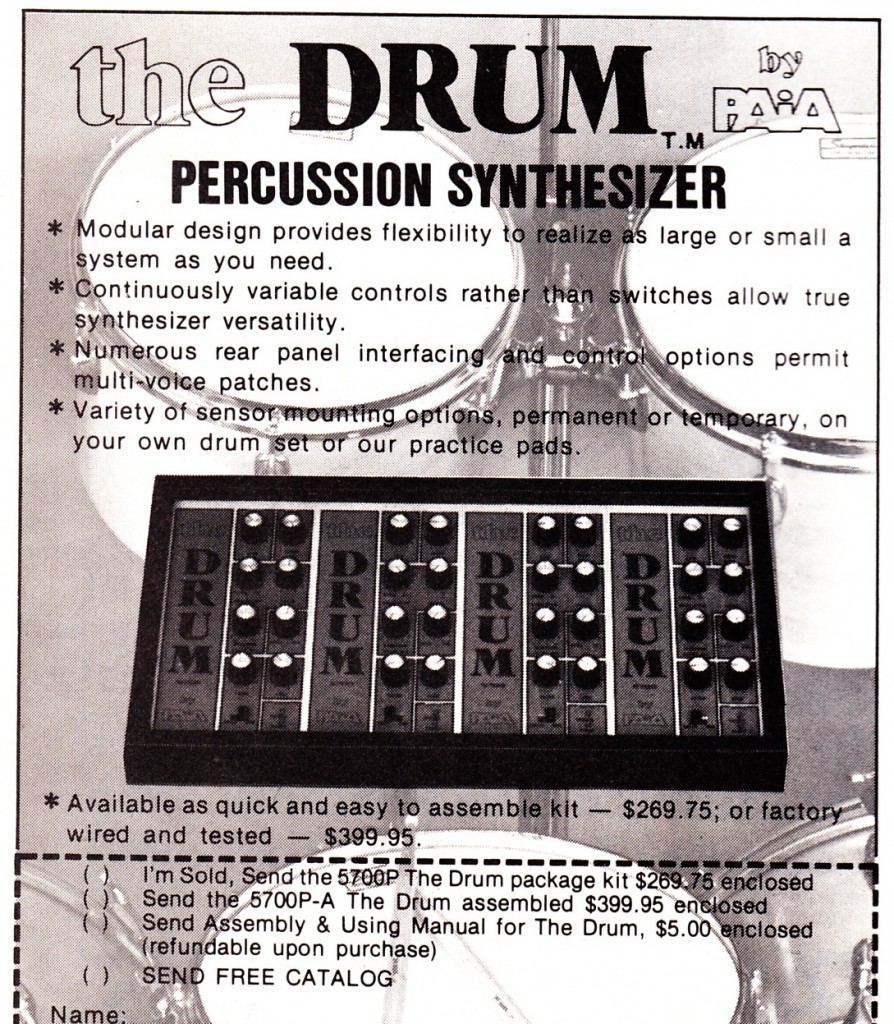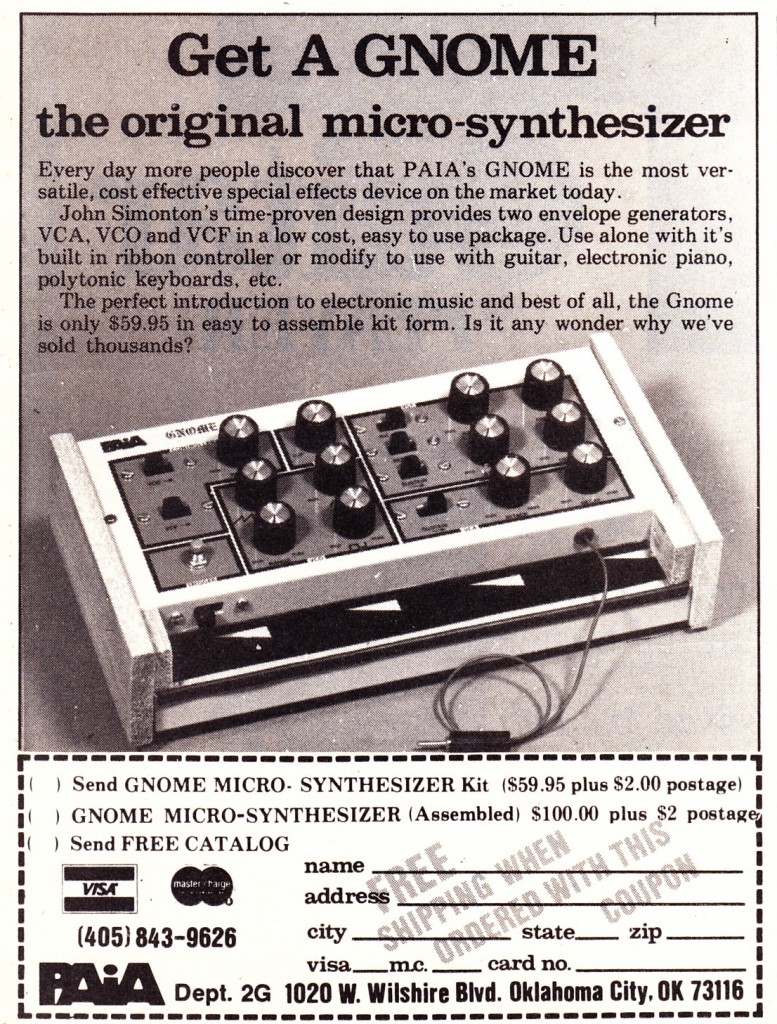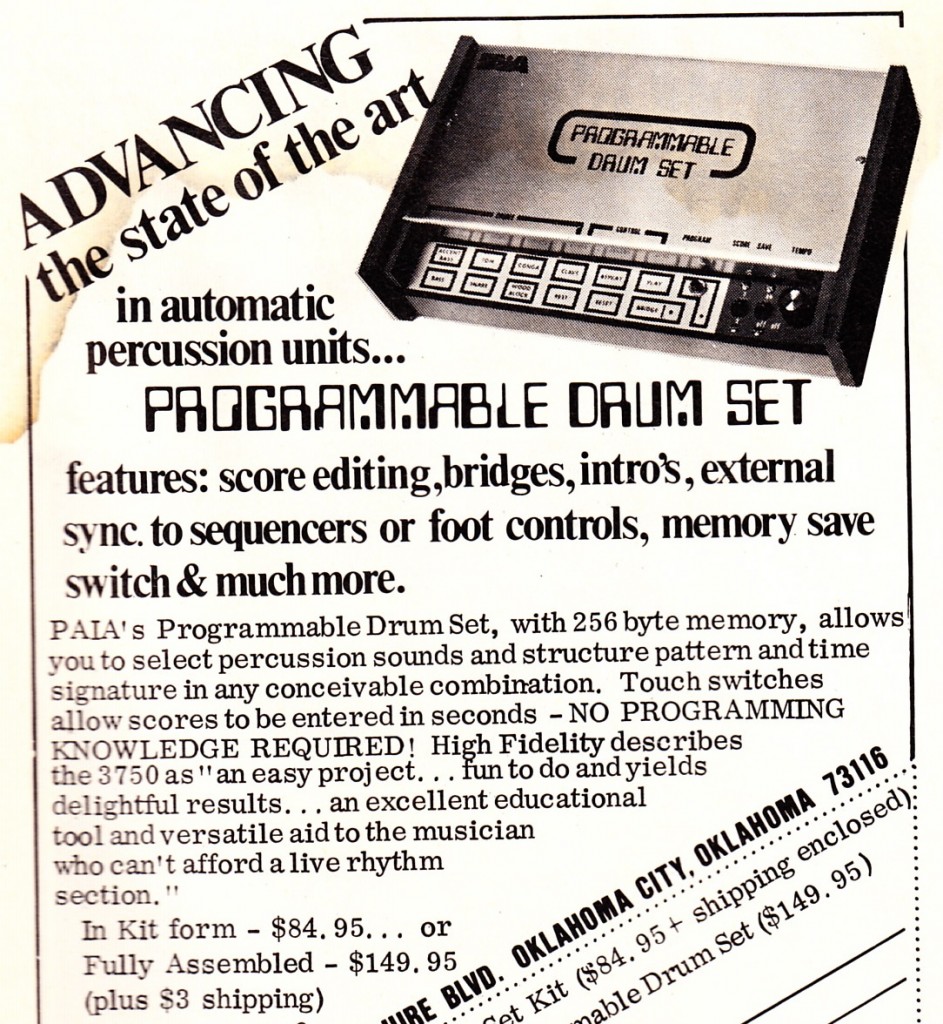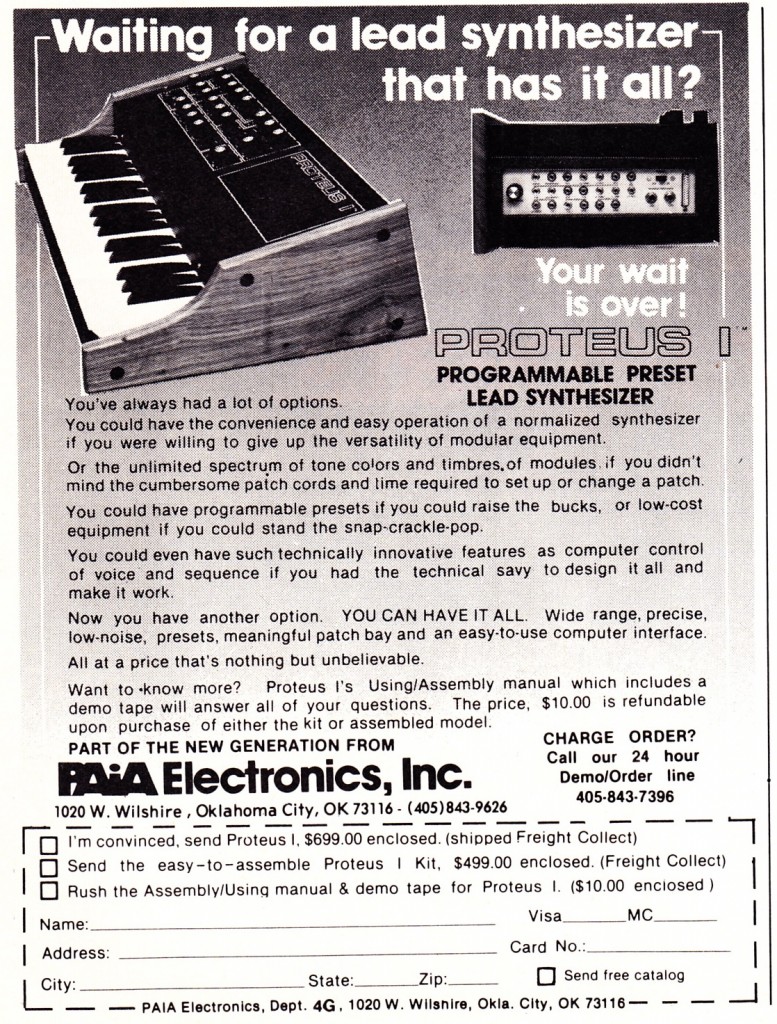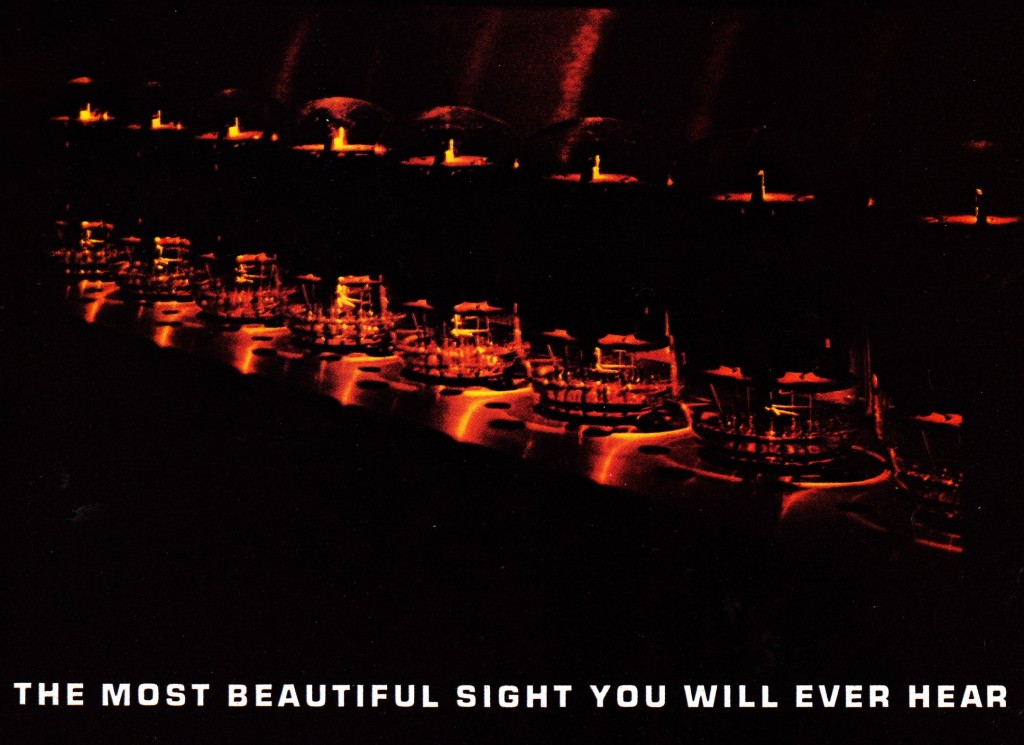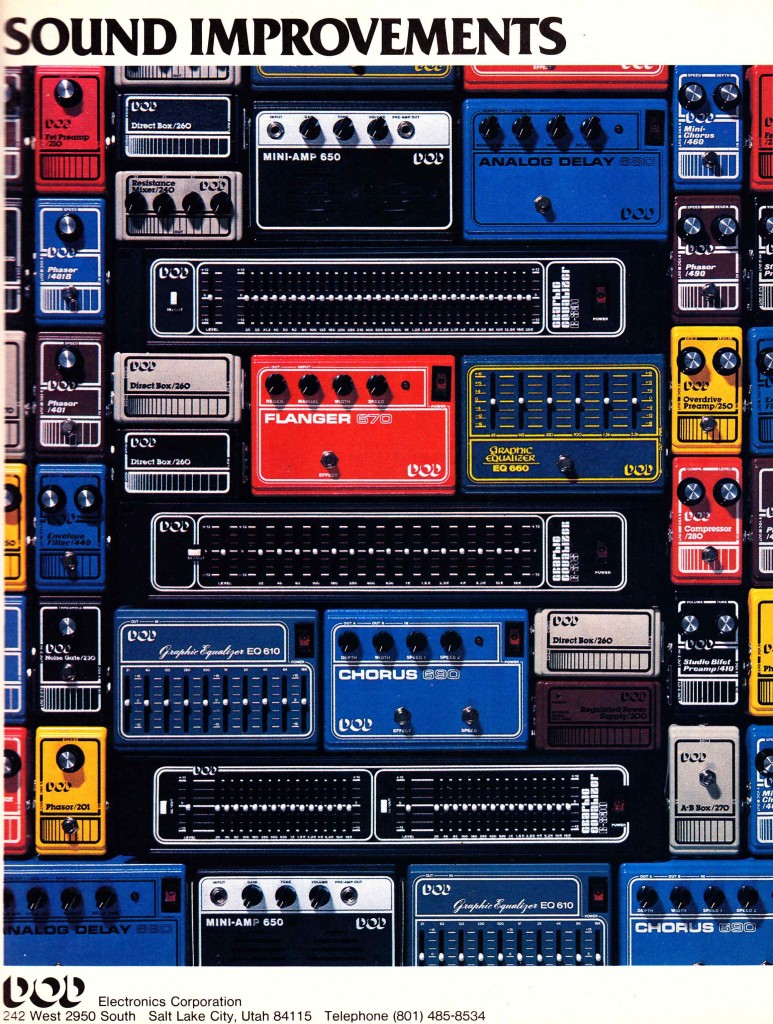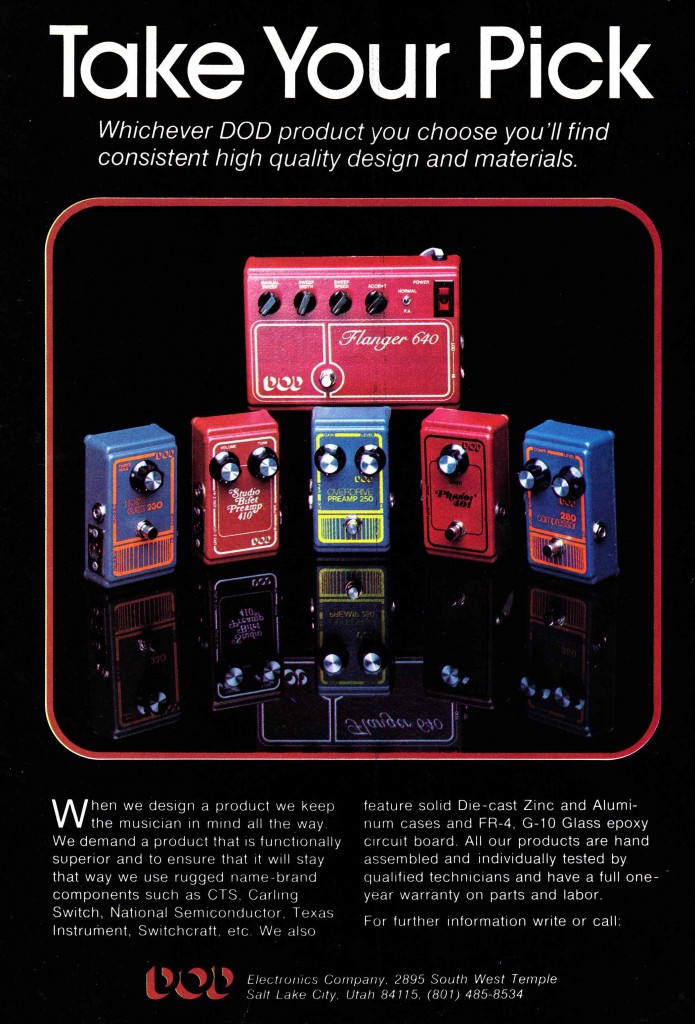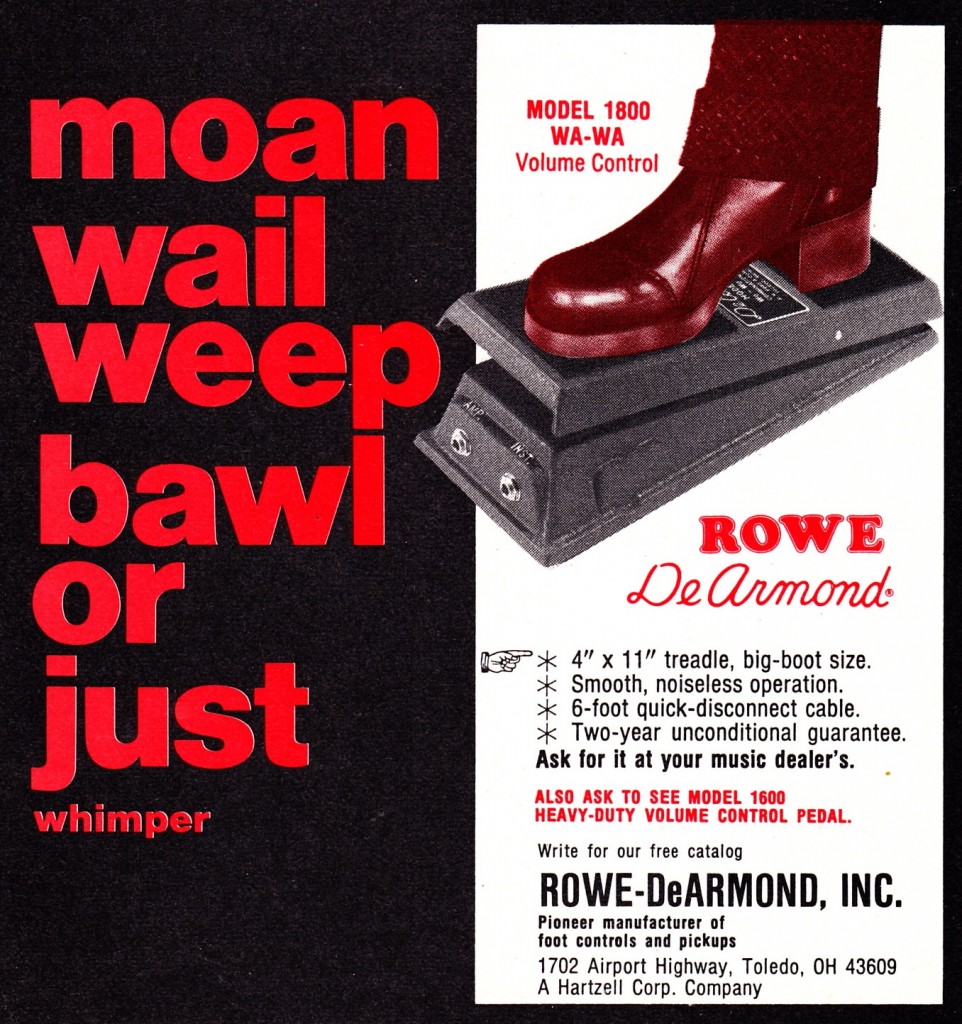 Rowe-DeArmond offers a volume-pedal sized for funky, funky boots.
Rowe-DeArmond offers a volume-pedal sized for funky, funky boots.
Today at PS dot com: some interesting odds n ends from the audio-effects pedal market of the 1970s. If yr using any of these boxes in the studio or on stage these days, drop a line and let us know…
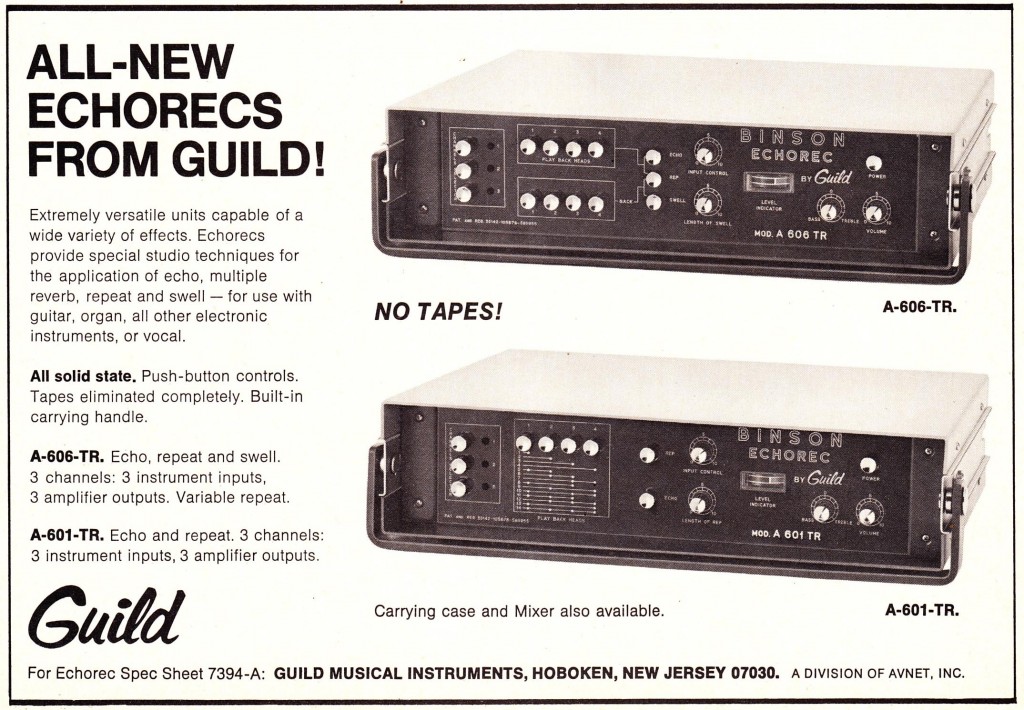 The Binson EchoRec, an electro-mechanical audio delay system that used a rotating disc rather than moving tape or oil. Italian built; marketed and distributed by Guild in the US (much like Guild distributed the earlier Watkins CopyCat). The EchoRec is best known as being the 70’s delay unit of choice of this dude, who certainly created a lot of significant sounds with it.
The Binson EchoRec, an electro-mechanical audio delay system that used a rotating disc rather than moving tape or oil. Italian built; marketed and distributed by Guild in the US (much like Guild distributed the earlier Watkins CopyCat). The EchoRec is best known as being the 70’s delay unit of choice of this dude, who certainly created a lot of significant sounds with it.
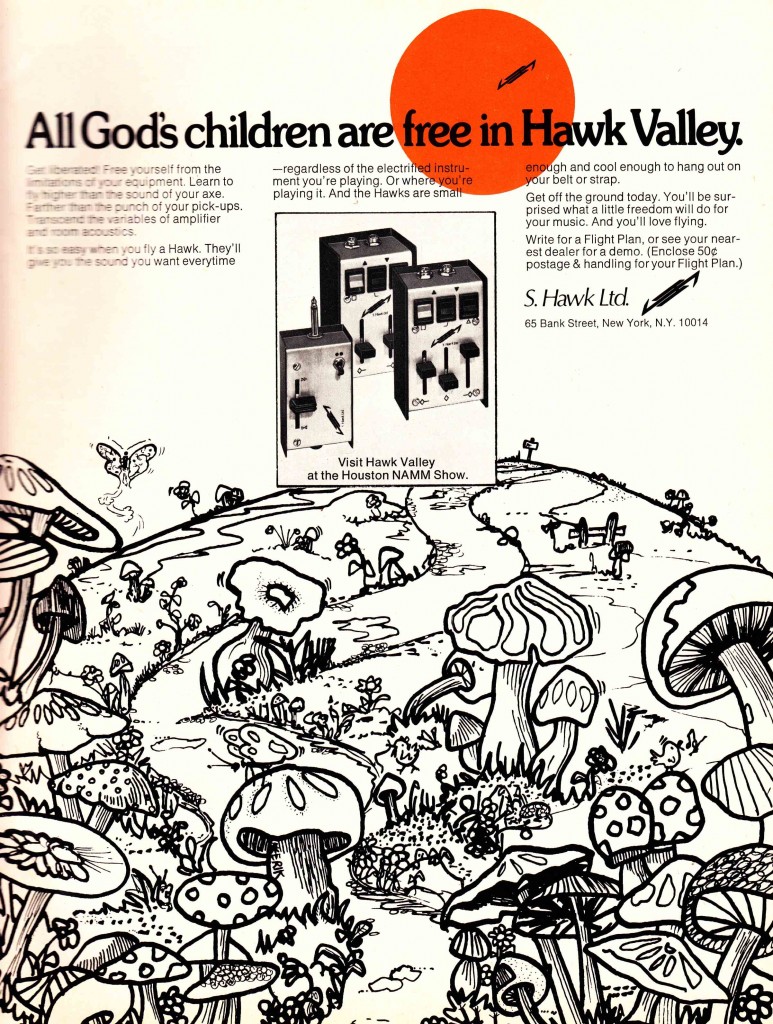 Hawk Effects: designed to hang off yr guitar strap rather than sit on the floor. I have never seen one of these in the flesh (steel). Anyone? The Mushrooms look threatening.
Hawk Effects: designed to hang off yr guitar strap rather than sit on the floor. I have never seen one of these in the flesh (steel). Anyone? The Mushrooms look threatening.
The Studer tape machine is the stove; Ibanez effects are the spice. Got it. Compressor II, Phase Tone, Graphic Equalizer, Tube Screamer, etc…
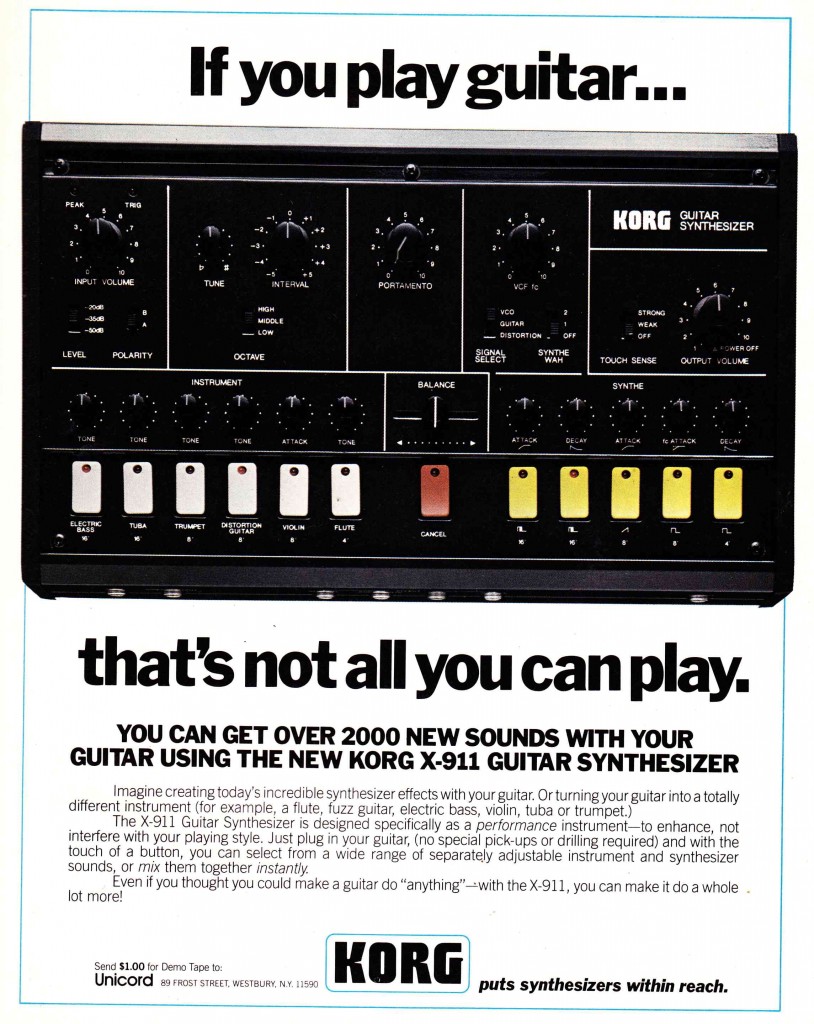 Korg X-911 Guitar Synthesizer. Is this an actual synth with a pitch-to-CV convertor on the input (like my beloved MS20) or a complex filter/distortion unit?
Korg X-911 Guitar Synthesizer. Is this an actual synth with a pitch-to-CV convertor on the input (like my beloved MS20) or a complex filter/distortion unit?
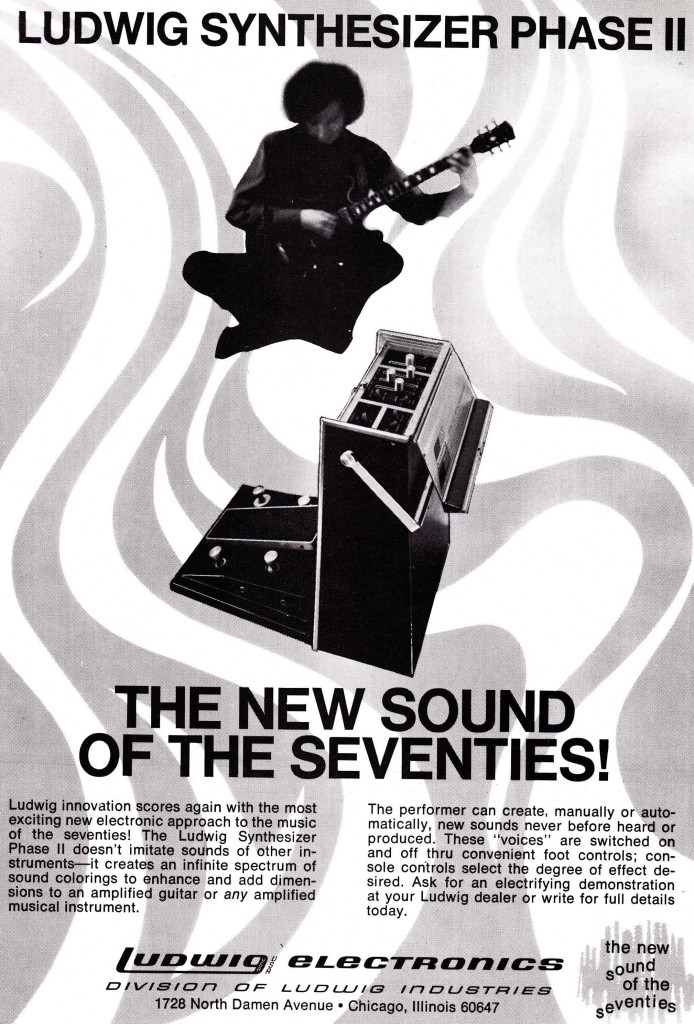 The Ludwig Phase II. Not an actual synthesizer, but pretty far out regardless. I remember seeing Thurston Moore using one of these back in the 90s. Check it out here…
The Ludwig Phase II. Not an actual synthesizer, but pretty far out regardless. I remember seeing Thurston Moore using one of these back in the 90s. Check it out here…
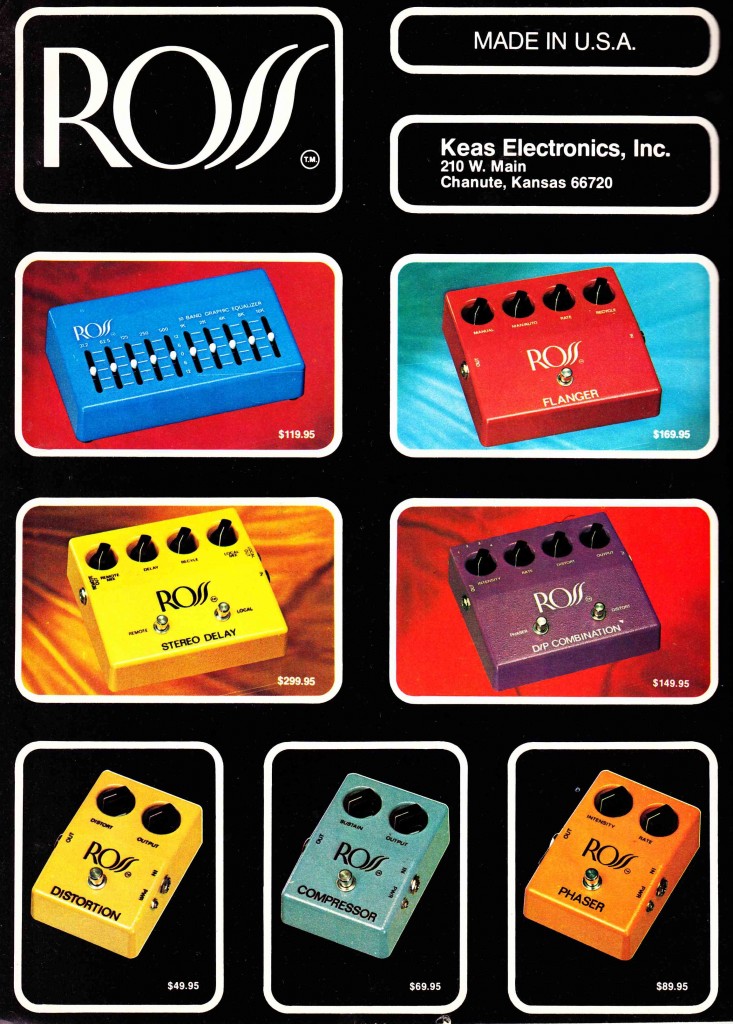 Ross effects, from the man who brought you Kustom. Wow I love this graphic design. The only unit from this lineup to attain classic status is the Compressor; these trade for high sums due to their close association with one of the most visible guitarists of the 1990s. Read this crazy story for the details….
Ross effects, from the man who brought you Kustom. Wow I love this graphic design. The only unit from this lineup to attain classic status is the Compressor; these trade for high sums due to their close association with one of the most visible guitarists of the 1990s. Read this crazy story for the details….
